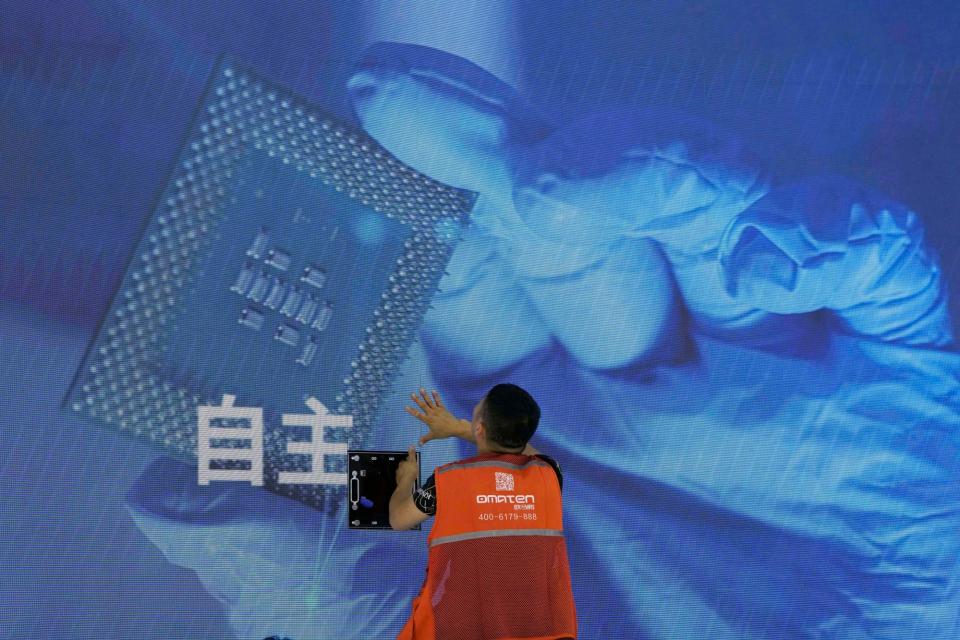Tech war: China doubles down on semiconductor self-sufficiency drive with US$47.5 billion Big Fund III
China has doubled down on efforts to achieve self-sufficiency in its semiconductor industry by creating the country's largest-ever chip investment fund, disregarding mounting pressure from US tech sanctions and a track record of corruption in these state-led programmes.
The third phase of the China Integrated Circuit Industry Investment Fund, also known as the "Big Fund", was established last Friday with a registered capital of 344 billion yuan (US$47.5 billion), according to information made available on Monday by Chinese corporate database service Qichacha.
Big Fund III has 19 equity investors led by China's Ministry of Finance with a 17 per cent stake, followed by the state-owned China Development Bank Capital with 10 per cent and state-asset manager Shanghai Guosheng Group with 8 per cent.
Do you have questions about the biggest topics and trends from around the world? Get the answers with SCMP Knowledge, our new platform of curated content with explainers, FAQs, analyses and infographics brought to you by our award-winning team.
China Construction Bank on Monday said it will contribute 21.5 billion yuan over a 10-year period for a 6.25 per cent stake in the fund. Bank of China and Agricultural Bank of China also said they will invest 21.5 billion yuan each. Bank of Communications will invest 20 billion yuan for a 5.81 per cent stake, while Postal Savings Bank of China will provide 8 billion yuan for a 2.33 per cent shareholding. Other enterprises that took part in Big Fund III include Industrial and Commercial Bank of China and China National Tobacco Corp.
The size of that new fund - roughly on par with the US$53 billion in incentives under the Chips and Science Act, which was enacted by US President Joe Biden in 2022 - shows the Chinese government's "whole nation" approach to build a self-sufficient semiconductor industry and overcome Washington's export restrictions that have handicapped the sector.
Hong Kong-listed shares of Semiconductor Manufacturing International Corp (SMIC), mainland China's biggest contract chip maker, closed 7.43 per cent higher at HK$16.48 on Monday. Shares of the country's No 2 chip foundry, Hua Hong Semiconductor, closed up 11.47 per cent at HK$19.82.
Launched in 2014, the Big Fund has been Beijing's main investment vehicle to support the domestic semiconductor industry's development, particularly in the areas of chip design, manufacturing and packaging, equipment and materials. It is a major investor in SMIC and Chinese memory chip giant Yangtze Memory Technologies Co, which are both in the US government's trade blacklist.
The Big Fund had raised 204.1 billion yuan in 2019, up from its initial financing of 138.7 billion yuan in 2014. This programme, however, has been rocked by corruption scandals that prompted an investigation of several senior executives for "suspected serious violations of the law".

A worker checks a display panel showing a semiconductor and the Chinese characters for "Independence" during the World Artificial Intelligence Conference in Shanghai on July 5, 2023. Photo: AP alt=A worker checks a display panel showing a semiconductor and the Chinese characters for "Independence" during the World Artificial Intelligence Conference in Shanghai on July 5, 2023. Photo: AP>
China's semiconductor industry, meanwhile, continues to show its strength in producing older-generation legacy chips that are widely used in cars, home appliances and various consumer electronics. China's global share of mature semiconductor-manufacturing capacity - covering 28-nanometre and older technologies - is expected to reach 39 per cent by 2027, up from 31 per cent in 2023, according to market research firm TrendForce.
Last December, a US move to investigate American companies' procurement of Chinese-made legacy chip triggered a backlash from Beijing, which blamed Washington for "weaponising" trade issues.
That further exacerbated geopolitical tensions amid heightened accusations from the US and Europe that China's excess industrial capacity has strangled their own manufacturing sectors.
Despite Beijing's efforts to bolster its domestic semiconductor industry, major manufacturers like SMIC remain largely dependent on foreign chip-making equipment, such as those from Dutch supplier ASML.
This article originally appeared in the South China Morning Post (SCMP), the most authoritative voice reporting on China and Asia for more than a century. For more SCMP stories, please explore the SCMP app or visit the SCMP's Facebook and Twitter pages. Copyright © 2024 South China Morning Post Publishers Ltd. All rights reserved.
Copyright (c) 2024. South China Morning Post Publishers Ltd. All rights reserved.

 Yahoo Finance
Yahoo Finance 